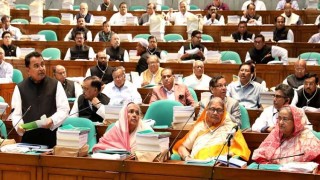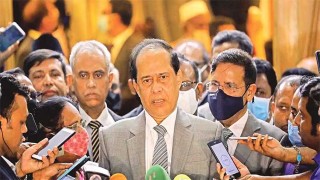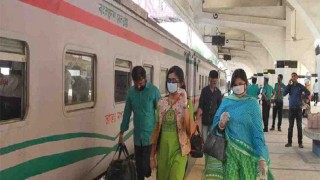63.51% women in Bangladesh face online harassment
27 November 2022, 07:08 pm | Updated: 21 April 2025, 11:34 pm

Around 63.51% of women respondents reported facing online violence, which was 50.19% last year, according to a study commissioned by ActionAid Bangladesh in 2022.
This means around 64 out of 100 women have to face online harassment and violence in the country.
The findings of the study were revealed in a discussion session titled ‘Stop Online Violence against Women: Challenges and Way Forward’ organised by ActionAid Bangladesh, on Sunday at BRAC Centre Inn, as a part of 16 Days of Activism to End Violence against Women campaign, reports UNB.
The study aimed to understand the rate of prevalence of online violence in the country.
It focused on identifying different types of violence and harassment experienced or perceived by women on online platforms and share effective recommendations to prevent online violence against women in Bangladesh.
It was conducted through an online survey in 6 districts - Shatkhira, Sunamganj, Patuakhali, Bandarban, Kurigram, and Lalmonirhat, covering 359 female participants aged between 15 to 35.
Farah Kabir, Country Director, ActionAid Bangladesh said violence against women is not new and it still exists in various forms.
“Be it in family, society or state, women are oppressed in every field, and it has various manifestations. One of its new means is online given this is an era of technology and as a result online violence against women is increasing rapidly. Especially teenagers and girls below 18 years are mostly falling into the trap of online violence. If everyone works together, as this year’s global theme signifies, violence against women can be reduced to a great extent,” she said.
The study reads, in 2022, among the various digital platforms women mostly faced online violence in Facebook (47.60%), in Messenger (35.37%), in Instagram (6.11%), in IMO (3.06%), in WhatsApp (1.75%) and in YouTube (1.31%).
The combined score under the ‘other’ option comes as 4.80% and the said platforms or way of harassment mentioned are video call, mobile phone, text etc.
Hateful and offensive sexual comments are ranked the highest among the types of online violence faced by women (80.35%) in the survey for this year, followed by sending sexually explicit pictures to inboxes and asking to have sex (53.28%) and discrimination against women (19.71%).
Some 17.47% respondents said they were harassed by offenders who created fake ID in their name, 16.16% said their activities were always followed in cyber space and 13.10 % were victims of personal attack for speaking out on gay rights.
Furthermore, 11.79% respondents said their private photos were posted on social media without their consent and 11.79% received threat of sexual assault.
Some 3.06% of the respondents revealed that they were photographed or recorded during sexual assault and those were later posted in social media.
Around 2.62% respondents said their picture of intimate moments was posted secretly and they were later blackmailed for money with a threat to release their personal information. Some 1.75% said their photos were edited and published in pornography site.
The study further found out that the most severe impact on women’s life due to online violence is psychological trauma, including depression and anxiety’ (65.07%).
The second highest impact is loss of confidence in being active or expressing opinions in social media (42.79%).
Being traumatized and losing self-dignity were reported by 25.33% and 24.89% respondents respectively.
The study also revealed that emotional distress caused by online violence and harassment is narrowing down women's self-confidence and independence in a severe way.
The study explored that 14.91% women submitted formal complaints against online violence and more than 85% sufferers remained silent even though they are harassed online in many ways.
Among the complainants, 44.12% filed complaint through social media reporting option, 20.59% through Facebook page of Police Cyber Support for Women- PCSW, 11.76% through National Emergency Service (999), 11.76% through nearest police station, 5.88% through Cyber Crime Investigation Division, CTTC and DMP.
The study further revealed that most of the women think that the existing complaining mechanisms do not work.
Taslima Yasmin, Assistant Professor, Faculty of Law, University of Dhaka opined that technical assistance is required in addition to strengthening the legal process to resolve online violence.
Mohammad Saiful Alam Khan, Project Director, Secured Email for Government and Digital literacy Center project, Bangladesh Computer Council (BCC), ICT Division said the government has set up a Digital Literacy Center for students at school, college, and university level so that they can easily acquire knowledge about digital literacy.
“At an individual level, we all need to be aware and careful about our online usage. Parents and journalists can also avail training on digital literacy and cyber security from the available options to prevent gender-based violence in all platforms.”






















